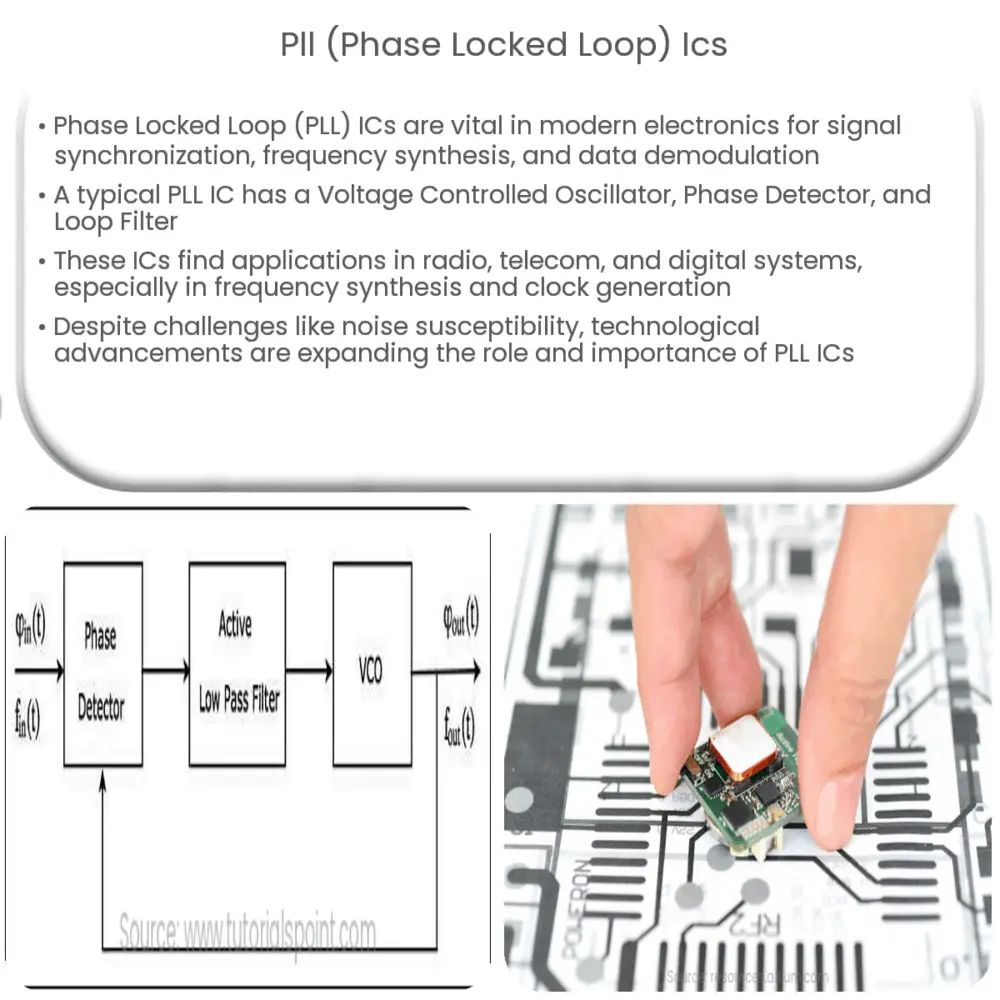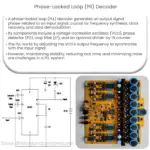Explore the working, applications, types, and design of Phase Locked Loop (PLL) ICs in modern electronic systems.

Introduction to Phase Locked Loop (PLL) ICs
Phase Locked Loop (PLL) is a crucial control system technique that has found extensive use in modern electronic systems. This technique enables synchronization of an output signal phase to an input signal phase, thereby establishing a significant role in the realms of frequency synthesis, demodulation, and digital data communication.
Working Principle of PLL ICs
A typical PLL IC consists of three primary components: a Voltage Controlled Oscillator (VCO), a Phase Detector (PD), and a Loop Filter. The VCO generates an output frequency that is directly proportional to its input control voltage. The PD, on the other hand, compares the phase of the input signal with the phase of the output signal from the VCO. Any difference detected is used to generate a control voltage, which the loop filter then smoothens out. This control voltage is used to adjust the VCO’s output frequency until it matches the input signal frequency and phase.
Applications of PLL ICs
- Frequency Synthesis: PLL ICs are commonly used in frequency synthesizers in radio and telecommunication devices. They play a vital role in generating stable frequencies required for tuning and channel selection.
- Data Demodulation: In digital communication, PLLs are used in the demodulation of Frequency Shift Keying (FSK) signals. They enable the recovery of the original data signal from the modulated carrier signal.
- Clock Generation: PLLs are instrumental in clock generation and distribution in digital systems. They ensure that the different parts of the digital system operate synchronously.
Types of PLL ICs
PLL ICs are classified based on their function and structure. There are several types of PLL ICs, such as Analog PLLs, Digital PLLs, and Software PLLs. Analog PLLs are often used in radio and television systems, while Digital PLLs find use in digital signal processing applications. Software PLLs, however, exist as algorithms in software-controlled systems.
Popular PLL ICs
There are various PLL ICs available in the market, each having its unique specifications and uses. Some of the popular PLL ICs include the CD4046, which is a micropower phase-locked loop that includes linear Voltage Controlled Oscillator (VCO) and two different phase comparators.
PLL IC Design
Designing a PLL IC involves understanding the characteristics and requirements of the system where it will be implemented. The designer must consider the system’s noise characteristics, power consumption, the range of operating frequencies, and lock time. These parameters are then used to select the type and specifications of the PLL IC. A well-designed PLL IC should exhibit low phase noise, rapid lock time, and high stability.
Challenges and Solutions
Despite their numerous applications and advantages, PLL ICs also present some challenges. They can be susceptible to noise, causing the output frequency to deviate from the desired value. To combat this, designers use a technique known as phase noise shaping to reduce the susceptibility of PLL ICs to noise. Another challenge is the potential for instability in the system. This can be mitigated by careful design of the loop filter to ensure system stability.
Future of PLL ICs
As the technology advances, the importance of PLL ICs is expected to rise. There is a continuous demand for high-frequency, low-power, and highly stable PLL ICs in various sectors such as telecommunications, data communication, and radiofrequency systems. PLL ICs are also expected to play a significant role in the development of 5G networks, which demand higher data rates and lower latency. Furthermore, advancements in digital and software PLLs provide new avenues for research and development.
Conclusion
In conclusion, Phase Locked Loop (PLL) ICs are an integral component in many modern electronic systems. They are essential in establishing synchronization between signals, frequency synthesis, data demodulation, and clock generation. Though there are challenges in designing and implementing these ICs, advancements in technology provide solutions to overcome these hurdles. The role of PLL ICs is set to expand as we continue to advance towards more sophisticated digital communication systems. Their importance in the present and future technological landscape cannot be understated.


.png)

